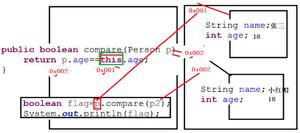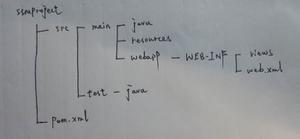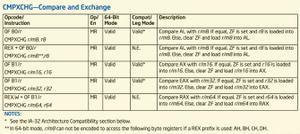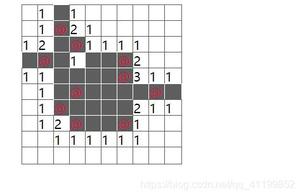java 封装rtp流

下面是RTP实现FU-A分包方式的代码,其中每个包的大小是1400字节。注释比较全面,看代码就行
private void sendData(byte[] r, int h264len)throws IOException { memset(sendbuf, 0, 1500);
sendbuf[1] = (byte) (sendbuf[1] | 96); // 负载类型号96,其值为:01100000
sendbuf[0] = (byte) (sendbuf[0] | 0x80); // 版本号,此版本固定为2
sendbuf[1] = (byte) (sendbuf[1] & 254); //标志位,由具体协议规定其值,其值为:01100000
sendbuf[11] = 10;//随机指定10,并在本RTP回话中全局唯一,java默认采用网络字节序号 不用转换(同源标识符的最后一个字节)
if (h264len <= packageSize) {
sendbuf[1] = (byte) (sendbuf[1] | 0x80); // 设置rtp M位为1,其值为:11100000,分包的最后一片,M位(第一位)为0,后7位是十进制的96,表示负载类型
System.arraycopy(intToByte(seq_num++), 0, sendbuf, 2, 2);//send[2]和send[3]为序列号,共两位
{
// java默认的网络字节序是大端字节序(无论在什么平台上),因为windows为小字节序,所以必须倒序
/**参考:
* http://blog.csdn.net/u011068702/article/details/51857557
* http://cpjsjxy.iteye.com/blog/1591261
*/
byte temp = 0;
temp = sendbuf[3];
sendbuf[3] = sendbuf[2];
sendbuf[2] = temp;
}
// FU-A HEADER, 并将这个HEADER填入sendbuf[12]
sendbuf[12] = (byte) (sendbuf[12] | ((byte) (r[0] & 0x80)) << 7);
sendbuf[12] = (byte) (sendbuf[12] | ((byte) ((r[0] & 0x60) >> 5)) << 5);
sendbuf[12] = (byte) (sendbuf[12] | ((byte) (r[0] & 0x1f)));
// 同理将sendbuf[13]赋给nalu_payload
//NALU头已经写到sendbuf[12]中,接下来则存放的是NAL的第一个字节之后的数据。所以从r的第二个字节开始复制
System.arraycopy(r, 1, sendbuf, 13, h264len - 1);
ts_current = ts_current + timestamp_increse;
System.arraycopy(intToByte(ts_current), 0, sendbuf, 4, 4);//序列号接下来是时间戳,4个字节,存储后也需要倒序
{
byte temp = 0;
temp = sendbuf[4];
sendbuf[4] = sendbuf[7];
sendbuf[7] = temp;
temp = sendbuf[5];
sendbuf[5] = sendbuf[6];
sendbuf[6] = temp;
}
bytes = h264len + 12;//获sendbuf的长度,为nalu的长度(包含nalu头但取出起始前缀,加上rtp_header固定长度12个字节)
client.send(new DatagramPacket(sendbuf, bytes, addr, port/*9200*/));
//send(sendbuf,bytes);
} else if (h264len > packageSize) {
int k = 0, l = 0;
k = h264len / packageSize;
l = h264len % packageSize;
int t = 0;
ts_current = ts_current + timestamp_increse;
System.arraycopy(intToByte(ts_current), 0, sendbuf, 4, 4);//时间戳,并且倒序
{
byte temp = 0;
temp = sendbuf[4];
sendbuf[4] = sendbuf[7];
sendbuf[7] = temp;
temp = sendbuf[5];
sendbuf[5] = sendbuf[6];
sendbuf[6] = temp;
}
while (t <= k) {
System.arraycopy(intToByte(seq_num++), 0, sendbuf, 2, 2);//序列号,并且倒序
{
byte temp = 0;
temp = sendbuf[3];
sendbuf[3] = sendbuf[2];
sendbuf[2] = temp;
}
if (t == 0) {//分包的第一片
sendbuf[1] = (byte) (sendbuf[1] & 0x7F);//其值为:01100000,不是最后一片,M位(第一位)设为0
//FU indicator,一个字节,紧接在RTP header之后,包括F,NRI,header
sendbuf[12] = (byte) (sendbuf[12] | ((byte) (r[0] & 0x80)) << 7);//禁止位,为0
sendbuf[12] = (byte) (sendbuf[12] | ((byte) ((r[0] & 0x60) >> 5)) << 5);//NRI,表示包的重要性
sendbuf[12] = (byte) (sendbuf[12] | (byte) (28));//TYPE,表示此FU-A包为什么类型,一般此处为28
//FU header,一个字节,S,E,R,TYPE
sendbuf[13] = (byte) (sendbuf[13] & 0xBF);//E=0,表示是否为最后一个包,是则为1
sendbuf[13] = (byte) (sendbuf[13] & 0xDF);//R=0,保留位,必须设置为0
sendbuf[13] = (byte) (sendbuf[13] | 0x80);//S=1,表示是否为第一个包,是则为1
sendbuf[13] = (byte) (sendbuf[13] | ((byte) (r[0] & 0x1f)));//TYPE,即NALU头对应的TYPE
//将除去NALU头剩下的NALU数据写入sendbuf的第14个字节之后。前14个字节包括:12字节的RTP Header,FU indicator,FU header
System.arraycopy(r, 1, sendbuf, 14, packageSize);
client.send(new DatagramPacket(sendbuf, packageSize+14, addr, port/*9200*/));
t++;
} else if (t == k) {//分片的最后一片
sendbuf[1] = (byte) (sendbuf[1] | 0x80);
sendbuf[12] = (byte) (sendbuf[12] | ((byte) (r[0] & 0x80)) << 7);
sendbuf[12] = (byte) (sendbuf[12] | ((byte) ((r[0] & 0x60) >> 5)) << 5);
sendbuf[12] = (byte) (sendbuf[12] | (byte) (28));
sendbuf[13] = (byte) (sendbuf[13] & 0xDF); //R=0,保留位必须设为0
sendbuf[13] = (byte) (sendbuf[13] & 0x7F); //S=0,不是第一个包
sendbuf[13] = (byte) (sendbuf[13] | 0x40); //E=1,是最后一个包
sendbuf[13] = (byte) (sendbuf[13] | ((byte) (r[0] & 0x1f)));//NALU头对应的type
if (0 != l) {//如果不能整除,则有剩下的包,执行此代码。如果包大小恰好是1400的倍数,不执行此代码。
System.arraycopy(r, t * packageSize + 1, sendbuf, 14, l - 1);//l-1,不包含NALU头
bytes = l - 1 + 14; //bytes=l-1+14;
client.send(new DatagramPacket(sendbuf, bytes, addr, port/*9200*/));
//send(sendbuf,bytes);
}//pl
t++;
} else if (t < k && 0 != t) {//既不是第一片,又不是最后一片的包
sendbuf[1] = (byte) (sendbuf[1] & 0x7F); //M=0,其值为:01100000,不是最后一片,M位(第一位)设为0.
sendbuf[12] = (byte) (sendbuf[12] | ((byte) (r[0] & 0x80)) << 7);
sendbuf[12] = (byte) (sendbuf[12] | ((byte) ((r[0] & 0x60) >> 5)) << 5);
sendbuf[12] = (byte) (sendbuf[12] | (byte) (28));
sendbuf[13] = (byte) (sendbuf[13] & 0xDF); //R=0,保留位必须设为0
sendbuf[13] = (byte) (sendbuf[13] & 0x7F); //S=0,不是第一个包
sendbuf[13] = (byte) (sendbuf[13] & 0xBF); //E=0,不是最后一个包
sendbuf[13] = (byte) (sendbuf[13] | ((byte) (r[0] & 0x1f)));//NALU头对应的type
System.arraycopy(r, t * packageSize + 1, sendbuf, 14, packageSize);//不包含NALU头
client.send(new DatagramPacket(sendbuf, packageSize+14, addr, port/*9200*/));
//send(sendbuf,1414);
t++;
}
}
}
}
其他的参数和代码:
private byte[] sendbuf=new byte[1500];private int packageSize=1400;
private int seq_num = 0;
private timestamp_increse=(int)(90000.0/framerate);//framerate是帧率
private int ts_current=0;
private int bytes=0;
// 清空buf的值
public void memset(byte[] buf, int value, int size) {
for (int i = 0; i < size; i++) {
buf[i] = (byte) value;
}
}
//返回的是4个字节的数组。
public byte[] intToByte(int number) {
int temp = number;
byte[] b = new byte[4];
for (int i = 0; i < b.length; i++) {
b[i] = new Integer(temp & 0xff).byteValue();
temp = temp >> 8;
}
return b;
}
h264每个NAL单元去掉起始符之后,直接将NAL单元数据作为sendData()的参数,就可以直接发送了。
以上是 java 封装rtp流 的全部内容, 来源链接: utcz.com/z/394256.html









